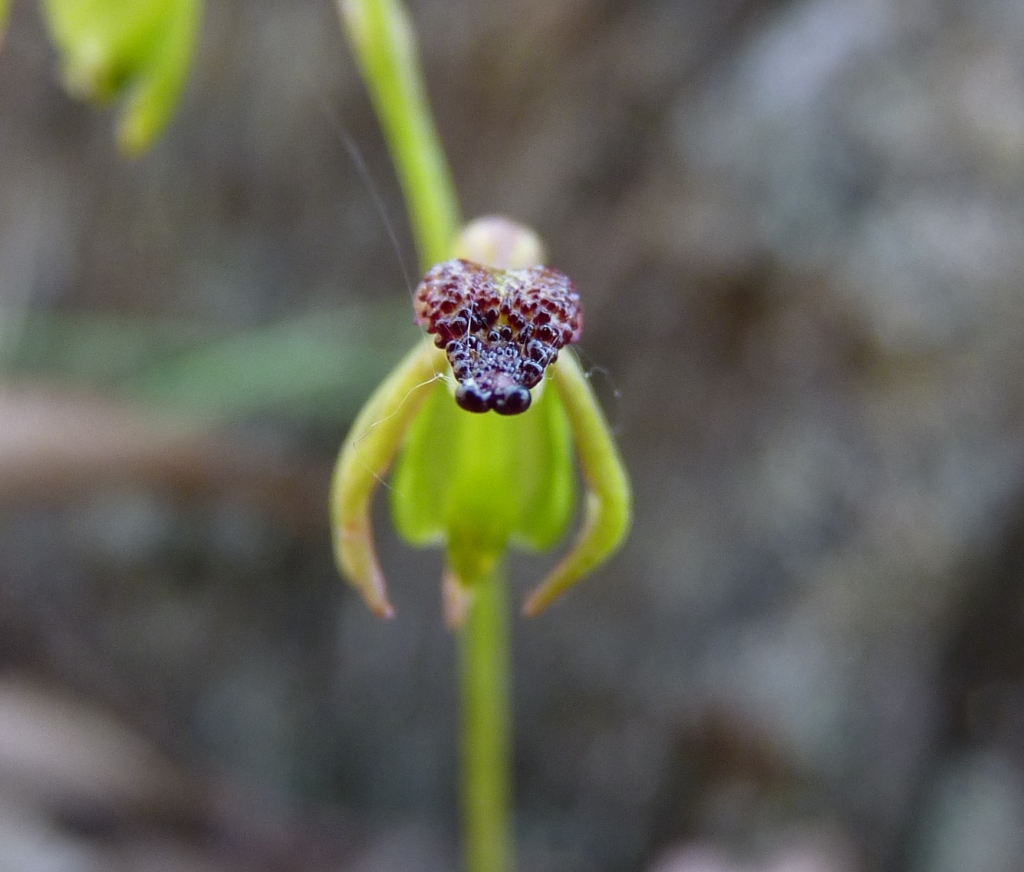Caleana minor
R.Br. Small Duck-orchidFlowering stem erect, 8–15 cm tall, slender, without sheathing bract. Leaf linear, 4–13 cm long, 1–3 mm wide, reddish-brown. Flowers yellowish-green to reddish-brown, 1–4 (with rudimentary bud at apex), on slender pedicels subtended by an acute bract; ovary straight or humped; dorsal sepal closely following curve of column, channelled, narrowly obovate to spathulate, 7–10 mm long; lateral sepals down-curved in direction of upper margins of column wings, distal end bent or curved away from column, channelled, linear-lanceolate, c. 7 mm long; petals erect or incurved against the column wings, thread-like, obtuse, c. 7 mm long. Labellum claw strap-like, curved, to 5 mm long, attached towards middle of inflated part of lamina; lamina ovate, c. 7 mm long, centre inflated and hollow, cavity open below, apex prolonged into beak-like extension with 2-lobed glandular tip; base with a triangular point and short spur on each side of claw; upper surface densely warty except near extreme base, under-surface smooth. Column broadly winged from anther to distal end of c. 3 mm long foot, cupped. Flowers mostly Oct.–Jan.
Wim, GleP, VVP, GipP, OtP, Gold, CVU, GGr, DunT, NIS, EGL, EGU, HSF, Strz, MonT, HFE. All States except WA. New Zealand. Found in heathlands, woodlands and open forests on well-drained sandy and gravelly soil. Plants are often clustered in bare areas around the base of trees.
A rare apomictic form with abortive anthers and fixed or only partially mobile labellum (previously regarded as a separate species, C. sullivanii) is found in the Grampians, the nearby Black Range and the Brisbane Ranges.
 Spinning
Spinning

